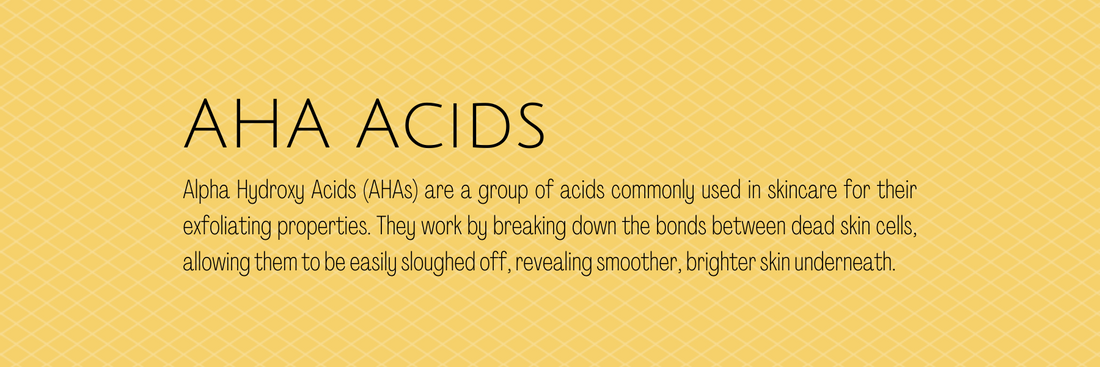Alpha-hydroxy acids (AHAs) are a group of water-soluble acids that are commonly used in skincare products for their exfoliating and rejuvenating properties. There are several types of AHAs, each with unique benefits for the skin. Here is an overview of some of the most commonly used AHAs:
-
Glycolic acid: Glycolic acid is derived from sugar cane and is the most popular AHA used in skincare products. It has a small molecular size, which allows it to penetrate the skin deeply and exfoliate effectively. It helps to reduce the appearance of fine lines and wrinkles, improve skin texture, and brighten the complexion.
-
Lactic acid: Lactic acid is derived from milk and is a milder AHA than glycolic acid. It is a good choice for those with sensitive skin or for those who are new to using AHAs. Lactic acid helps to hydrate the skin, exfoliate gently, and improve the appearance of dark spots and hyperpigmentation.
-
Mandelic acid: Mandelic acid is derived from almonds and is a larger molecule than glycolic acid. This makes it a gentler AHA that is suitable for those with sensitive skin. Mandelic acid helps to improve skin texture, reduce the appearance of fine lines and wrinkles, and brighten the complexion.
-
Citric acid: Citric acid is derived from citrus fruits and is a mild AHA that is often used in skincare products as a natural preservative. It helps to exfoliate gently, improve skin texture, and brighten the complexion.
-
Tartaric acid: Tartaric acid is derived from grapes and is a mild AHA that helps to exfoliate gently and improve skin texture.
- Mixed fruit acids (also known as fruit acid blends or fruit enzyme blends): Mixed fruit acids combine multiple types of alpha-hydroxy acids (AHAs) derived from various fruits such as pineapple, papaya, grapefruit, and citrus fruits. The purpose of using mixed fruit acids is generally to provide a balanced and comprehensive exfoliation for the skin. Each fruit extract contributes its unique set of AHAs, enzymes, and antioxidants, which work together to improve skin texture, promote cell turnover, and enhance overall skin appearance.
When using AHAs, it is important to start with a low concentration and gradually build up to avoid irritation or sensitivity. AHAs can increase sun sensitivity, so it is important to use a broad-spectrum sunscreen during the day to protect the skin from UV damage.

